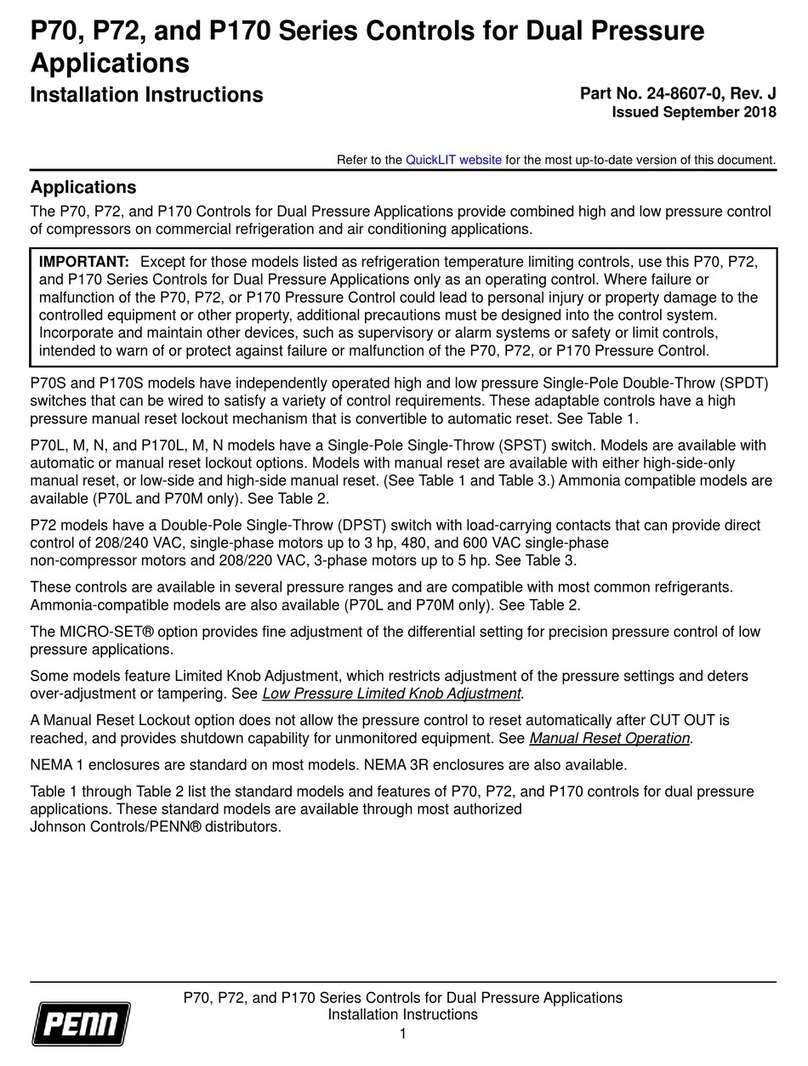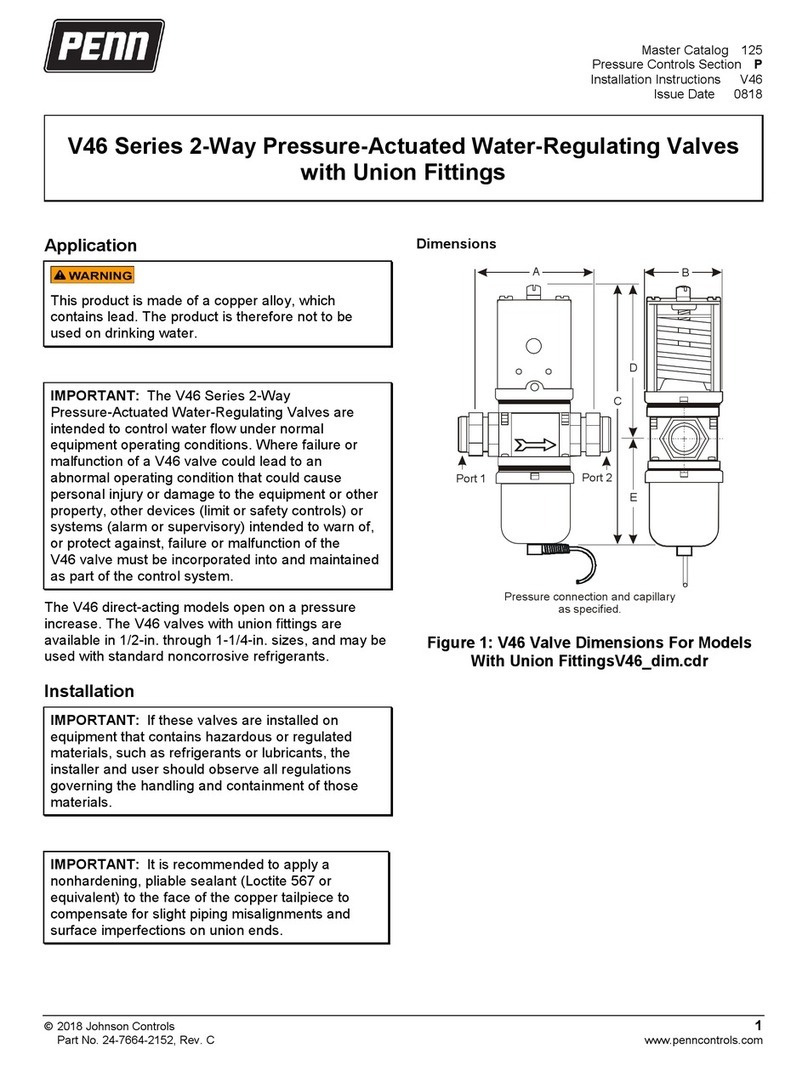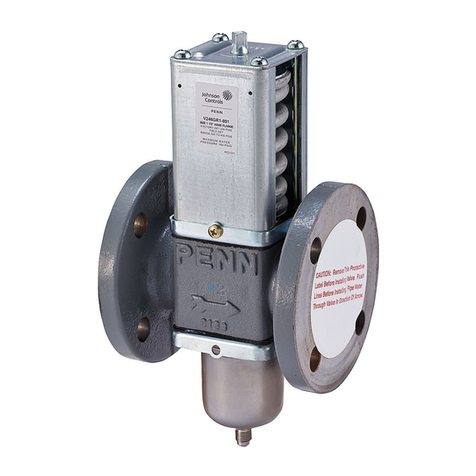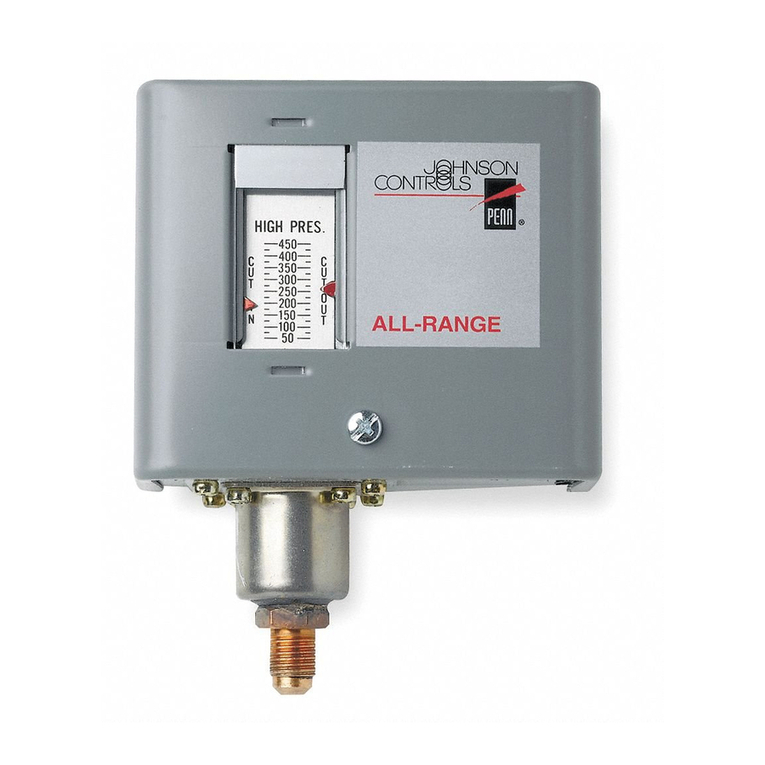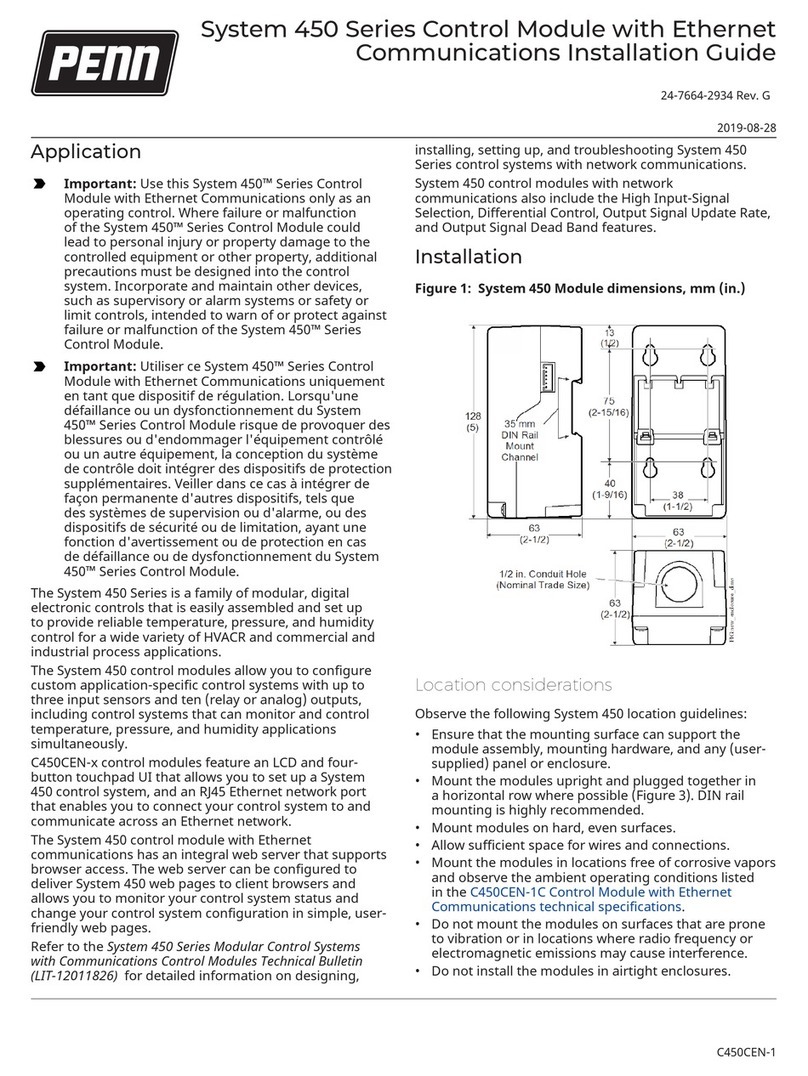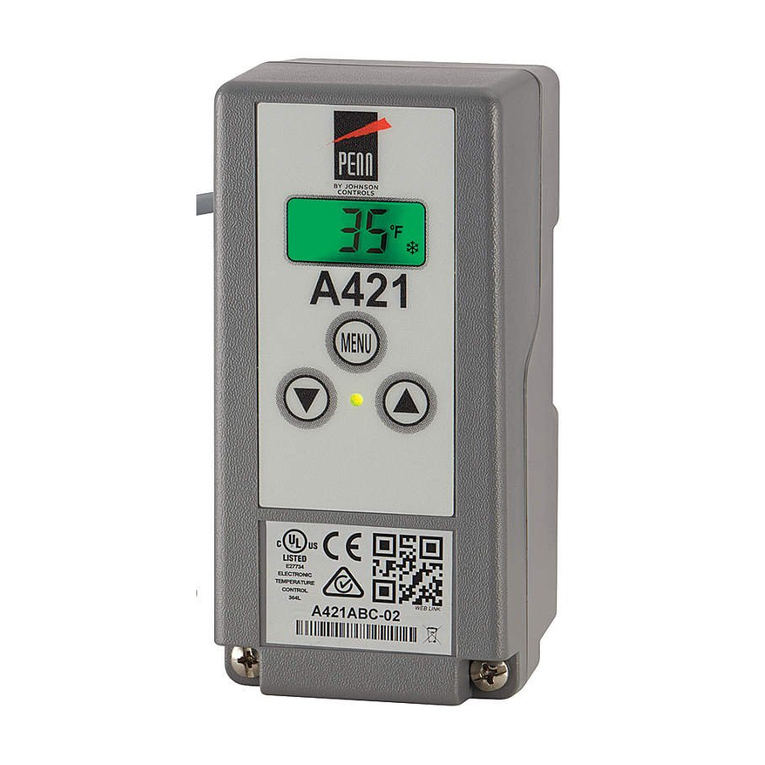
Installation Instructions P70
Issue Date 0918
© 2018 Johnson Controls 1
Part No. 24-7664-1938, Rev. F
P70, P72, and P170 Series Controls for
High Pressure Applications
Application
P70, P72, and P170 Series Controls for High Pressure
Applications provide high-side pressure control on
commercial refrigeration and air conditioning
applications.
IMPORTANT: Except for those models listed
as Refrigeration Pressure Limiting Controls, use the
P70, P72, and P170 Series Controls for High
Pressure Applications only as an operating control.
Where failure or malfunction of a P70, P72, or P170
pressure control could lead to personal injury or
property damage to the controlled equipment or
other property, additional precautions must be
designed into the control system. Incorporate and
maintain other devices such as supervisory or alarm
systems or safety or limit controls intended to warn
of, or protect against, failure or malfunction of the
P70, P72, or P170 pressure control.
P70C, P70D, P170C, and P170D type models
with Single-Pole Single-Throw (SPST) Open-High
switch action are the most popular models and are
typically used as high pressure Cutout controls.
The C type models are automatic reset controls.
The D type models have a manual reset lockout
mechanism. Some P70C, P70D, P170C, and
P170D type models are UL Listed as refrigeration
pressure limiting controls. See Table 2 for
standard models available.
P70A and P170A type models feature SPST
Open-Low switch action and typically are used for
condenser-fan cycling control.
P70 and P170 Series models with Single-Pole
Double-Throw (SPDT), or 4-Wire, 2-Circuit switch
action allow users to install alarm devices or other
control circuits.
P72 Series models have a Double-Pole
Single-Throw (DPST) switch with load-carrying
contacts that can provide direct control of 208-240
VAC single-phase motors up to 3 hp, 480 and 600
VAC single-phase noncompressor motors, and
208-220 VAC 3-phase motors up to 5 hp. See
Table 6.
Controls are available in several pressure ranges and
are compatible with most common refrigerants.
They may also be used on air, water and other
noncorrosive fluid applications. Ammonia compatible
models are also available.
CAUTION: Risk of Property Damage.
Mount the pressure control separately from the
electrical cabinet and seal all electrical piping to
prevent ammonia from migrating to electrical
components. Where there may be exposure to
ammonia, use only ammonia compatible control
modules and pressure connections. System
shutdown due to improper adjustment may cause
property damage.
The Manual Reset Lockout mechanism does not
allow the pressure control to automatically reset after
the control has Cutout, providing shutdown capability
for unmonitored equipment. See Manual Reset
Operation.
NEMA 1 enclosures are standard on most models.
NEMA 3R enclosures are also available on quanity
orders.
Dimensions
Mounting Hole
3/16
5Diameter
2-Mounting Holes
10-32 UNF-2B
Thread
4
101
3-1/16
77
1-5/16
34
1/16
2
15/16
24
2-1/16
53 1-1/4
33
3/16
4
3/16
4
7/8
22 Conduit Hole
5/16
8
3-1/4
83 5/16
8
1
25
1-1/8
29
1-7/8
49
5/16
8
3/8
10 X3/16
5
Diameter
Mounting Hole
(NEMA 1/2 in.)
3-1/4
83
2-13/16
71
1-11/16
43
15/16
(24)
15/16
(24)
Figure 1: Dimensions for P70, P72, and P170
Pressure Controls with NEMA 1 Enclosures,
in. (mm)

